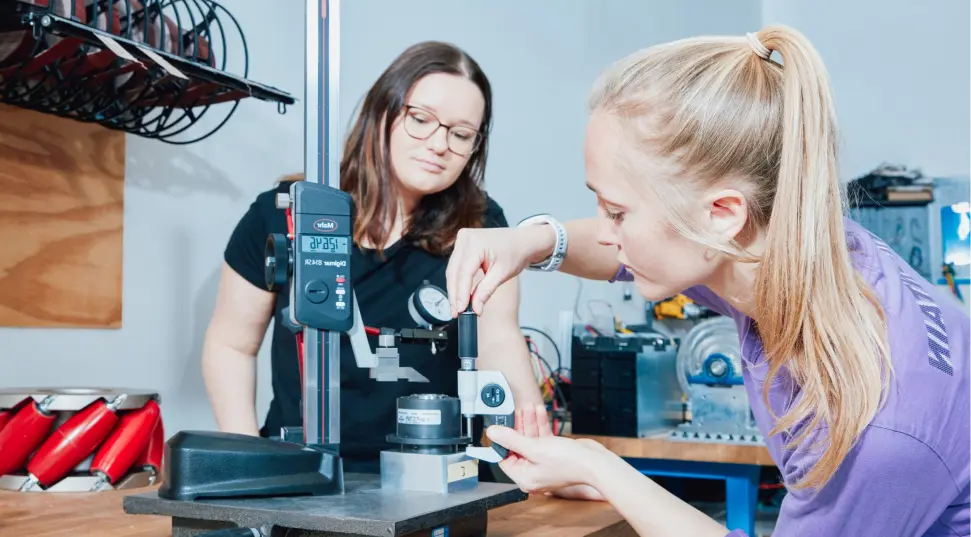After all the promises made and expectations raised, we’re checking on the current state of AR and VR and what this technology is and isn’t capable of.
The Hype Surrounding AR & VR Made Us Dream
Augmented Reality and Virtual Reality (AR and VR) are two technologies that promise real-life application of some of our wildest sci-fi tech-dreams like… Holographic screens and data floating about in a workspace, views of the Bahamas out of a 20th story New York apartment… or maneuvering your Delorean through the legs of a t-rex at about 80 miles per hour. But what can AR and VR deliver right now? How can they improve our lives today? Do they live up to the hype?
Will This Vision Ever Become Reality?
Augmented Reality and Virtual Reality (AR and VR) are two technologies that promise real-life application of some of our wildest sci-fi tech-dreams like…Holographic screens and data floating about in a workspace, views of the Bahamas out of a 20th story New York apartment… or maneuvering your Delorean through the legs of a t-rex at about 80 miles per hour. But what can AR and VR deliver right now? How can they improve our lives today? Do they live up to the hype?
- AR is able to make maintenance tasks significantly easier by allowing technicians to look at a machine through a tablet and pull up all relevant information in order to determine and document any defects tied directly to exact parts.
- Doctors can perform more accurate surgeries with x-ray overlays providing a look inside the patient during the operation.
- Augmented windows are already being developed. One example is the Hyperloop train that covers long distances through underground tubes.
For virtual reality, the gaming industry accounts for a large portion of the applications, with video game titles like Superhot VR, Star Trek Bridge Crew, or Beatsaber and VR adaptations like Skyrim VR or Resident Evil 7 VR.
However, some of the most fascinating implementations can be found in an industrial environment:
- In healthcare, 360° videos of real-life operations allow doctors all over the world to watch difficult or uncommon surgeries and in order to gain more experience in treating them.
- Construction companies are able to examine structures and identify flaws before the first brick has been laid.
- Architects can showcase apartments that are being built, which is very appealing to potential buyers as it gives a “hands-on” feel.
- Tourism companies allow you to experience fascinating locations around the globe without leaving your apartment.
- Educational institutions can take students on interactive tours through the human body, the solar system, or ancient Egyptian tombs.
But Why Is the Vision of These Technologies Not Becoming a Reality? What Are the Limits?
Unfortunately, many developers struggle to deliver the full virtual reality experience because the technologies face challenges, including:
- Lack of high enough resolution for fast changing virtual environments
- Difficulties in how to best introduce mobility and haptic interaction with the virtual world
- Limited field of view (FOV) also limits the immersion
(New glasses like the Pimax 8K promise to provide almost human-like FOVs of about 200° and drastically higher resolutions to improve VR experiences in the near future.)
Particularly when it comes to choosing the right hardware approach, VR development seems to be at a set of crossroads, with different paths offering their own take on how to push VR forward.
The HTC Vive uses separate tracking-boxes and high-power PCs connected via cable or additional wireless adapters to push the VR-experience to its limit, sacrificing accessibility and simplicity and putting a bigger price tag on it. The well-known company Oculus, with the Oculus Go and upcoming Oculus Quest, favors portability and wide accessibility by eliminating the need for external computational power, cable, and external sensors. Other more consumer-oriented VR products allow entry-level experiences by using smartphones instead of integrated or external computers.
While all options are viable, they differ significantly in how they function and how they can be used. This may slow down the growth of the technology since the metaphorical eggs are not in one basket, and software developers may need to choose to either create products that run equally well on all systems or limit accessibility further by only producing for only one system.
From a diversity and fail-fast perspective, the current state allows for simultaneous developmental leaps into different directions, making VR more applicable for a more varied user base. It still remains to be seen if ultimately one option will prove more effective at delivering the full VR experience, and, if so, which one it will be.
AR requires a lot of computational power since it needs to scan, analyze, and store the reality in front of the user or the device. This makes wearable high AR power products, like AR glasses, that also remain portable and sleek, currently near impossible without connected base stations, such as the Magic Leap Lightwear.
This is a difficulty AR developers hope will be solved with the introduction of 5G connections. This would allow centralized server processing power to handle the intense computational requirements in split-seconds while the AR glasses can favor more user-friendly designs.
Most AR glass designs use special lenses that have mirrors cut into them to allow the digital content to be projected from the frame into the users FOV. The visual space of the headset that can be digitally augmented is often still limited to only a portion of the full field of view, due to technical constraints of the holographic lenses.
Smartphone and tablet solutions allow the user to see the digital content through a sort of window that the screen provides through which users can interact with the added content. This provides a lot of usability but is far from what AR ultimately should achieve.
Until full field-of-view use can be achieved, tablet or smartphone solutions already provide significantly smoother integration of digital information and content into real-life processes and help to augment our reality.
Is There Any Future for the Technology?
As you can see virtual reality and augmented reality technology is far from perfect and is still undergoing growing pains. But hope is not lost. There are so many different aspects to these technologies that need to be considered, solved, developed, and implemented so that AR and VR may ultimately reshape how we interact with the real world in front of us completely. We have only scratched the surface regarding the useful implementation of the technology, and the hardware development has a long way to go to reach the “sci-fi” level we all dream of.
But that may just be the reason to keep an eye out for smart ways AR and VR can already help improve our lives and how we interact with the world around us today. We know that we are contributing to that for sure. If you want to know what AR and VR can do for you today, talk to our experts below.











